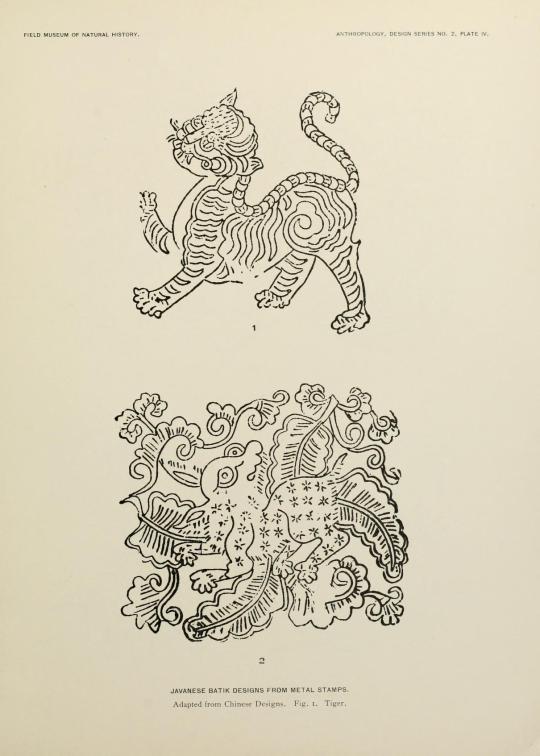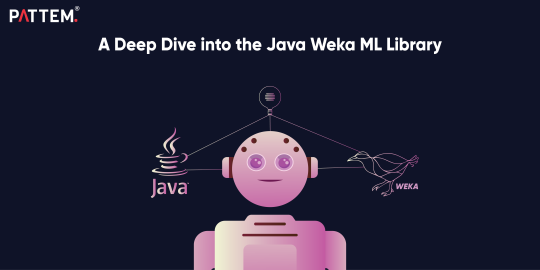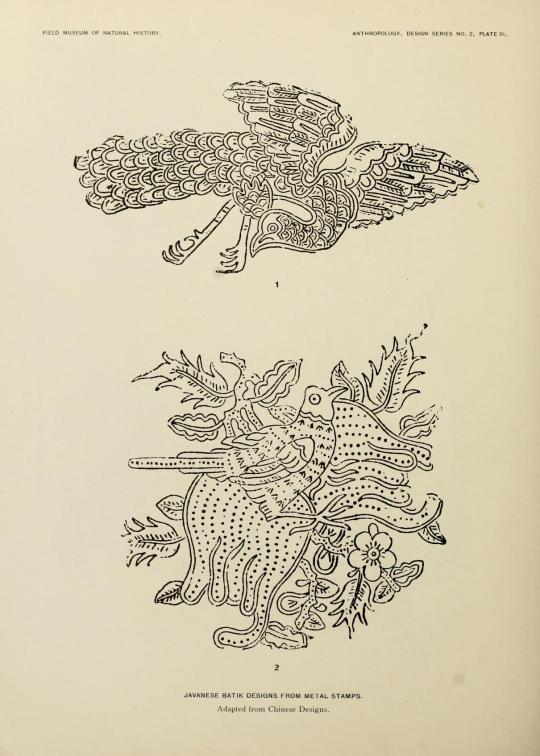#Java Libraries
Explore tagged Tumblr posts
Text
Essential Java Libraries Every Developer Should Know About

Java is a flexible and strong programming language generally utilised for fostering a different scope of uses. From web improvement to portable applications, endeavour programming to logical figuring, Java keeps on being a famous decision among engineers.
One of the fundamental explanations behind Java’s prevalence is its extensive environment of libraries and structures. These libraries provide pre-composed code and prepared-to-utilize functionalities that save engineers time and exertion, enabling them to zero in on taking care of explicit issues as opposed to rehashing an already solved problem. This makes Java an ideal choice for developers looking to build web applications using Java.
In this blog, we will explore an organised rundown of fundamental Java libraries that each engineer ought to be aware of. These libraries offer many elements, including information control, organising, simultaneousness, testing, logging, and substantially more. Whether you are a novice or an accomplished Java developer, these libraries will upgrade your efficiency and assist you with building strong and productive applications.
Guava:
Guava is a strong open-source library created by Google that complements the core Java libraries. It offers a rich arrangement of utilities and information structures, including caching, and functional programming support, and that’s only the tip of the iceberg. Guava’s assets lie in its elegant API design and the convenience it accommodates normal programming tasks. Whether you need to handle collections more efficiently or work with functional programming concepts, Guava is an astounding decision.
Benefits of Guava
Rich Collection Utilities:
A comprehensive set of collection utilities
Convenient and efficient working with collections
Immutable collections for robust and scalable code
Helper methods for filtering, transforming, and combining collections
Functional Programming Support:
Incorporates functional programming concepts
Provides functional interfaces like Function, Predicate, and Supplier
Enables expressive and concise code
Utilities for working with functional types like Optional and Streams
String Utilities:
Enhanced functionality for string manipulation
Utilities for joining and splitting strings
Handling null or empty strings gracefully
CharMatcher class for efficient character matching and manipulation
Caching:
Powerful caching framework
Efficient creation and management of caches
Control over cache size, eviction policies, expiration times, and concurrency levels
Improved application performance by caching expensive operations or frequently accessed data
Event Bus:
Decoupling components and implementing event-driven architectures
Publishing and subscribing to events
Loose coupling and better modularity
Simplified communication and introduction of new functionalities or components
Drawbacks of guava:
Learning Curve:
Guava introduces new concepts and APIs.
Requires learning and getting used to.
Especially for developers unfamiliar with functional programming or Google’s coding style.
May take time to understand and leverage Guava’s features effectively.
Code Size:
Using Guava may increase project dependencies.
The library itself is not lightweight.
The additional overhead of including Guava may not be justified.
Particularly in resource-constrained environments or small-scale projects.
Java 8 Overlap:
Many features in Guava are now available in core Java libraries since Java 8.
Guava provides backward compatibility and enhancements.
Some features may overlap with the built-in capabilities of Java 8 or newer versions.
Apache Commons:
Apache House is an assortment of reusable Java parts that give executions to normal errands like string control, input/yield tasks, and information structures. It offers a large number of utilities and is generally embraced by designers around the world. A few outstanding parts incorporate Apache Center Lang (for working with strings, exhibits, and dates), Apache Commons IO (for input/output operations), and Apache Commons Collections (for advanced data structures).
Pros of Apache Commons:
Extensive Functionality: Offers a wide range of utilities and components for various tasks, saving development time.
Community-Driven Development: Developed by an active open-source community, ensuring continuous improvements and bug fixes.
Mature and Stable: Established as a reliable and stable library through rigorous testing and development.
Wide Adoption: Popular among Java developers, providing ample resources and community support.
Interoperability: Integrates well with other libraries and frameworks, making it versatile for different projects.
Cons of Apache Commons:
Learning Curve: The extensive range of components may require time and effort to understand and explore.
Library Size: Including the entire library may increase the project footprint, potentially problematic for resource-limited applications.
Dependency Management: Proper management of dependencies, including potential conflicts or compatibility issues, is crucial.
Limited Customization: Some developers may prefer more customizable solutions tailored to their specific needs.
Jackson:
Jackson is an elite exhibition JSON handling library for Java. It offers powerful help for parsing JSON information into Java objects (deserialization) and changing over Java objects to JSON (serialisation). Jackson offers flexible configuration options, extensive compatibility, and excellent performance, making it the go-to library for JSON processing in Java. It coordinates consistently with well-known systems like Spring and is generally utilised in web improvement.
Pros:
Comprehensive and Flexible: Supports various JSON formats and offers flexible configuration options.
High Performance: Utilises efficient algorithms and optimised parsing techniques for quick processing.
Integration with Java Frameworks: Seamlessly integrates with popular Java lightweight web frameworks like Spring.
Rich Feature Set: Offers a wide range of features, including support for data binding and handling complex object graphs.
Community Support: Has a large and active community of developers, ensuring ongoing support and frequent updates.
Cons:
Configuration Complexity: Numerous configuration settings and features may overwhelm developers.
Learning Curve: Requires learning about annotations, object-mapping mechanisms, and configuration settings.
Potential Performance Overhead: Flexibility and extensive features may introduce some performance overhead.
JUnit:
Software development includes unit testing, and JUnit is the de facto standard library for Java unit testing. It offers a straightforward and tasteful framework for creating test cases and executing them to confirm the accuracy of your code. Writing and organizing test suites is made simple by JUnit’s support for annotations, assertions, test fixtures, and test runners. It enables automated testing as part of the development process and interfaces seamlessly with building technologies like Maven and Gradle.
Pros:
Simplified Test Writing: JUnit provides an easy-to-use framework with annotations, assertions, and test fixtures.
Test Organization: Test cases can be organised into logical groups using test suites and runners.
Test Coverage Analysis: JUnit supports code coverage tools to identify inadequately tested code.
Continuous Integration Support: JUnit works well with CI systems like Jenkins, Travis CI, and CircleCI.
Cons:
Learning Curve: Mastering advanced features and best practices of JUnit may require time and experience.
Test Maintenance Overhead: Tests need to be regularly updated as the codebase evolves.
Limited Support for Asynchronous Testing: JUnit has some limitations when it comes to testing asynchronous code.
Dependency on External Resources: Testing components relying on external resources requires additional configuration and setup.
Hibernate:
The object-relational mapping (ORM) package called Hibernate makes it easier for Java programs to access databases. It enables object-oriented paradigms to be used by developers to interact with databases, doing away with the requirement for manual SQL queries. Hibernate manages the mapping of Java objects to database tables, automates CRUD (Create, Read, Update, Delete) activities, and offers sophisticated capabilities like transaction management, lazy loading, and caching. It is a foundational Java persistence library that is frequently applied in enterprise-level applications.
Productivity and Simplicity
Hibernate eliminates the need for writing tedious and error-prone SQL queries manually.
It provides a higher level of abstraction by mapping Java objects to database tables.
Developers can focus on business logic instead of dealing with low-level database operations.
Simplifies development and boosts productivity.
Database Independence
Hibernate allows easy switching between different database vendors.
Supports various databases such as Oracle, MySQL, PostgreSQL, and more.
Minimal configuration changes are required to switch the underlying database.
The application code does not need to be rewritten.
Object-Oriented Paradigm
Working with persistent objects directly instead of SQL statements and result sets.
Promotes an object-oriented approach to data access.
Leverages Java’s object-oriented features like inheritance, polymorphism, and encapsulation.
Caching and Performance Optimization
Hibernate includes first-level and second-level caches to improve application performance.
The caching mechanism reduces database round-trips and stores frequently accessed data in memory.
Faster response times and reduced load on the database.
Transaction Management
Hibernate simplifies transaction management with automatic support.
Defines transaction boundaries for data consistency and integrity.
Efficient management of transactions with support for different isolation levels.
In conclusion, mastering these essential Java development services will undoubtedly enhance your skills as a Java engineer and engage you to fabricate vigorous, proficient, and viable applications. Keep exploring and experimenting with these libraries, and stay updated with the latest advancements in the Java ecosystem to stay ahead in your development journey.
Read More Essential Java Libraries Every Developer Should Know About
#Java Libraries#Java Development Services#Java Application development#Java Frameworks#Java Slandered Library#Java Web Framework
0 notes
Text










Buku Akik, Sleman, Yogyakarta, Indonesia.
#book#books#poetry#library#ghibly#vibtage#yogya#java#westjava#yogyakarta#jogja#sleman#aesthetic#photography#indonesia
35 notes
·
View notes
Video
n169_w1150 by Biodiversity Heritage Library Via Flickr: Fleurs, fruits et feuillages choisis de l'ille de Java. Bruxelles :C. Muquardt,[1880]. biodiversitylibrary.org/page/280005
#1880#Belgium#Botany#Graphic media :#Hand-colored#Indonesia#Java#Lithograph#Missouri Botanical Garden#Peter H. Raven Library#bhl:page=280005#dc:identifier=http://biodiversitylibrary.org/page/280005#papaya#Berthe Hoola van Nooten#artist:name=Berthe Hoola van Nooten#artist:viaf=67398754#WomenInScience#taxonomy:binomial=Carica papaya#BHLIG#fruit#HSA#Q4895535#illustrator:wikidata=Q4895535#HerNaturalHistory#carica papaya#papaya papaw#papaw#flickr
5 notes
·
View notes
Text
Project update
In June, when I started the jolt-jni open-source software project, I considered it a subsidiary project. However, it proved so absorbing that it soon soaked up most of my attention, leaving little for all my other projects.
This is surprising, since unlike most of my projects, it has no graphical component (yet) meaning no satisfying CGI images to enjoy (and perhaps share on social media).
Also unlike most of my projects, I was coding it from scratch, yet constrained by a preexisting API. In practice, that meant writing a ton of boring boilerplate. Prior to this I'd been scornful of the idea of using AI to generate code. But for generating boilerplate code, I can see that mechanical aids have their place.
Now that the library is about 80% complete, I've turned more of my attention to testing. My progress (measured in lines of code) is much slower. Some days I delete more code than I add. The good news is, I enjoy troubleshooting far more than coding.
For the record, here are the current statistics:
+ 1472 commits
+ Overall 48K lines of code (excluding comments and blanks)
+ 29K lines of Java (including 8K lines of tests and examples)
+ 17K lines of C++
#open source#software development#coding#java#c++#troubleshooting#api#current project#library#generative ai
2 notes
·
View notes
Text

Albert Buell Lewis (1867-1940), Javanese Batik Designs from Metal Stamps, Chicago, Field Museum of Natural History, Anthropology of Design Series, no. 2, 1924.
Digitized for the Biodiversity Heritage Library.
13 notes
·
View notes
Text
The Forgotten Depths Update: Explore New Biomes

The Forgotten Depths update unleashes for Necesse the fast-growing sandbox survival game Steam Deck, Linux, Mac, and Windows PC. to the creative minds at Fair Games — they just keep finding new ways to surprise us. You can find a discount on Steam and Humble Store, plus 92% Very Positive reviews. If you haven’t played Necesse yet, now’s the time to jump in — and if you have, get ready, because things just got way more intense. Indie dev team Fair Games just shadow dropped a brand-new content update during the Triple-i showcase, and it’s already live on Steam Deck and Linux. Yep, right now. It's called The Forgotten Depths update, and it’s full of new content, a wild new boss, and a whole biome those brave enough to dive in. Oh, and did we mention the new boss? Meet the Cursed Crone. She’s not here to play nice. If you’re into boss fights that actually push your skills, she’s going to be your new best nightmare. There’s also new armor sets, weapons, and trinkets to help you survive all the new chaos. Plus, the devs have made some big upgrades to the economy system — traders got smarter, and the Task Board system is better than ever.
The Forgotten Depths update Trailer
youtube
Why You Should Play Right Now
It’s Free This Weekend! Grab a few friends, hop into co-op, and start exploring. Or go solo if that’s your style. Either way, the title’s fully open for a test run right now.
The Game is Going Off. With the Forgotten Depths update, Necesse is shaping up to be one of the biggest sandbox survival hits of 2025. The community’s growing fast, and it’s a great time to get in on the action.
You Get to Help Shape 1.0. The full release is coming later this year, and the devs want feedback. Play now, and your voice could help fine-tune what gameplay looks like at launch.
With over 25 unique areas, 150+ craftable items, 17 tough bosses, and a world that changes every time you play. Necesse sandbox survival has serious replay value. Whether you’re a builder, a fighter, a crafter, or just someone who likes a good survival challenge — this title’s got something for you. So yeah — the Forgotten Depths update is live, the monsters are waiting, and that new boss isn't going to slay itself. Grab your gear, round up your squad, and we’ll see you in the caves. You can play the new changes on Steam and Humble Store. Priced at $9.74 USD / £8.44 / 9,74€ with the 35% discount. Along with support for Steam Deck (verified), Linux, Mac, and Windows PC.
#necesse#the forgotten depths#sandbox survival#linux#gaming news#fair games#ubuntu#steam deck#mac#windows#pc#lightweight java game library#Youtube
0 notes
Text
youtube
Land Your Dream Job at Meta, #Amazon, #Apple, #Netflix & More!
Who doesn’t dream of working at Meta, Amazon, Apple, Netflix, or even Spotify? But landing a job at these top tech companies requires more than just coding skills—it takes hands-on experience, mentorship, and the right guidance to stand out.
At Naresh IT, we help students become job-ready Full Stack Developers with: ✅ Live, interactive classes with hands-on coding & real-time feedback ✅ One-on-one mentorship from industry experts ✅ Placement assistance in Full Stack Java & Full Stack .NET ✅ End-to-end support until you land a job (for dedicated and hardworking students)
Visit: https://nareshit.com/
0 notes
Text
Just restarted DAI. Maybe I’ll actually finish a Dragon Age game this time!
#had to return the pc i’ve been gaming on for a year#goodbye java minecraft and bg3#i’m back on ps4 exclusively#it’s been like 2 years since I’ve played dai so i thought it better to restart instead of trying to remember stuff#which is probably the same reason why i never finished origins and 2#stopped playing and forgot it all *sigh*#asdfghjkl literally went through my whole game library today looking for something with party dynamics where my choices matter somewhat#and this was the best i had#dragon age inquisition
0 notes
Text
#nlp libraries#natural language processing libraries#python libraries#nodejs nlp libraries#python and libraries#javascript nlp libraries#best nlp libraries for nodejs#nlp libraries for java script#best nlp libraries for javascript#nlp libraries for nodejs and javascript#nltk library#python library#pattern library#python best gui library#python library re#python library requests#python library list#python library pandas#python best plotting library
0 notes
Text
Leveraging the power and portability of WebAssembly, Extism is an off-the-shelf plug-in system just a library import away. Call plug-ins written in WASM from a number of host languages, such as Java, JS, Rust, and others.
0 notes
Text

Library of Buitenzorg, modern-day Bogor, Java, Indonesia
Dutch vintage postcard
#library of buitenzorg#tarjeta#postkaart#sepia#carte postale#ansichtskarte#dutch#briefkaart#photo#photography#postal#postkarte#modern-day#vintage#postcard#historic#library#indonesia#modern#buitenzorg#bogor#java#ephemera
1 note
·
View note
Text
A Deep Dive into the Java Weka ML Library

Listing some Pivotal Points of Java Libraries and their Merits
Java is an object-oriented programming language that can be used as a platform in itself. It is a fast, secure, and reliable programming language used for developing more innovative and interactive applications, from mobile applications and enterprise software to server-side technologies and big-data applications. To make the development more effective and easier, specific tools, libraries, and frameworks are used. By choosing the perfect library for the project, companies can streamline the development process, enhance code efficiency and quality, and also speed up the company’s development lifecycle. These libraries are very essential in the developer’s toolkit, which significantly improves code maintainability and productivity.
A Java library is a collection of classes that were previously pre-written by somebody. Jackson, Apache, Maven, JUnit, and Google JSON are some of the most widely used Java libraries. Moreover, Java provides a lot of libraries, except for standard libraries. Java ML libraries can also be used to make the process much more effective and easier. Java ML is a collection of data mining and machine learning algorithms that include a common interface for each. In this blog, we will learn some magnificent insights about Java ML libraries and their key features and advantages. So, without wasting any further time, let us jump into the blog!
Peregrinating Java ML Libraries and Their Key Benefits and Advantages
Generally, WEKA offers a wide range of machine learning and data mining algorithms. These, combined with the user-friendly and adaptable interface, make it an ideal choice for generative AI and academic research rather than traditional applications such as regression, classification, and clustering. Moreover, WEKA, specifically abbreviated as Waikato Environment for Knowledge Analysis, is a very popular and widely used software suite for machine learning and data mining tasks. It also provides a user-friendly graphical interface for numerous algorithms. Furthermore, the graphical user interface of WEKA makes it easy to prototype and test characteristic algorithms. The user-friendly environments enable companies to experiment with visualizing results in different settings and understand the behavior of the algorithm. WEKA offers multiple data filters like normalization, cleansing, and transformation, along with specific tools to explore and build new features before applying machine learning algorithms.
WEKA provides a booming Java Application Program Interface (API), which is very beneficial in integrating custom algorithms into larger Java-based workflows and applications. Moreover, it also provides tools to evaluate and integrate the algorithm's performance. This capacity is crucial to comparing approaches against some established methods using the regulated evaluation metrics. In addition to that, WEKA possesses a diverse collection of algorithms that cover supervised learning, unsupervised learning, and evaluation metrics. This versatility allows companies to tackle numerous machine learning problems without the help of any particular tool. Being an open-source technology offers customization, transparency, and community support. WEKA runs effortlessly on Windows, MacOS, and Linux, offering great flexibility for multiple computing environments.
Noting Down some Key features and Key Takeaways from the Blog
WEKA is the perfect technology to be used for academic research and personal projects, as it completely eliminates license costs. Moreover, it can also be used for diverse ML solutions, including regression, classification, dimensionality reduction, clustering, and more. Preferring the best Java development services company also plays an important role in a company’s elevation and growth.
Pattem Digital is the leading Java development services company that provides its clients with the best feature-rich applications in the industry. We possess a combined team of talented professionals to make their applications more innovative and user-friendly. We also make sure to provide our clients with applications that meet their business needs and user requirements. We also maintain an impeccable track record of customer satisfaction.
0 notes
Text
Logging Frameworks that can communicate directly with Fluent Bit
While the typical norm is for applications to write their logs to file or to stdout (console), this isn’t the most efficient way to handle logs (particularly given I/O performance for the storage devices). Many logging frameworks have addressed this by providing more direct outputs to commonly used services such as ElasticSearch and OpenSearch. This is fine, but the only downside is that there is…
View On WordPress
#.net#Erlang#Fluentbit#Go#Golang#java#languages#libraries#loggiong#node.js#OCAML#perl#PHP#python#Ruby#Scala
0 notes
Text
new coding challenge
Software coding is a highly creative pursuit. But for the past few years, I've put most of my software effort into maintenance and troubleshooting. I've written *some* new code, of course, but a lot of that was for demos and tests. I'd begun thinking of myself as primarily a maintainer, not an innovator.
For the past 6 weeks, however, I've focused on writing a new open-source library from scratch. So far, it's 7,000 lines of Java and 5,000 lines of C++ (excluding blank lines and comments).
Sustaining 250+ lines per day is possible only because a lot of what I'm writing is boilerplate requiring scant creativity. At this point, the design is mostly set. The API is closely based on another project. The biggest challenge has been boredom.
That's why on 11 July (when Gradle v8.9 was released) I pounced on the opportunity to upgrade all my projects, even though it was boring, routine maintenance. At least it was a different flavor of boring.
I look forward to finishing this phase of the project and getting back to maintenance and troubleshooting.
#open source#software development#software engineering#coding#troubleshooting#software maintenance#library#boredom#gradle#api#java#c++#creativity
4 notes
·
View notes
Text

Albert Buell Lewis (1867-1940), Javanese Batik Designs from Metal Stamps, Chicago, Field Museum of Natural History, Anthropology of Design Series, no. 2, 1924.
Digitized for the Biodiversity Heritage Library.
10 notes
·
View notes
Text
i know there’s a lot of low code/no code game dev tools out there for beginners but are there are good high code game dev tools? i don’t want to move assets around and connect logic boxes like unreal engine i want to code but graphics and animation scare me
0 notes
